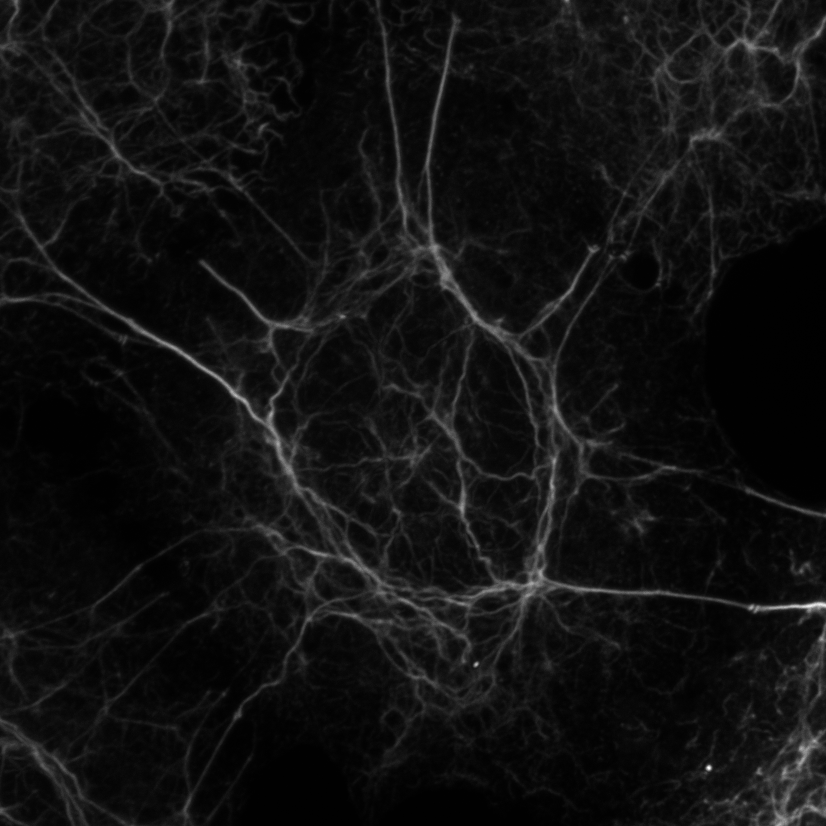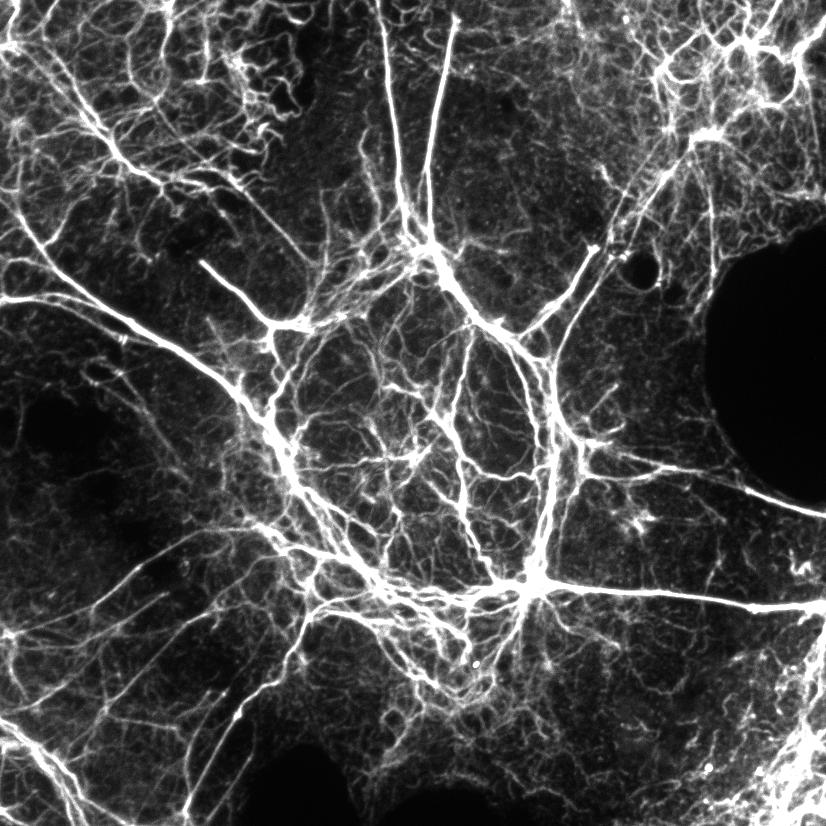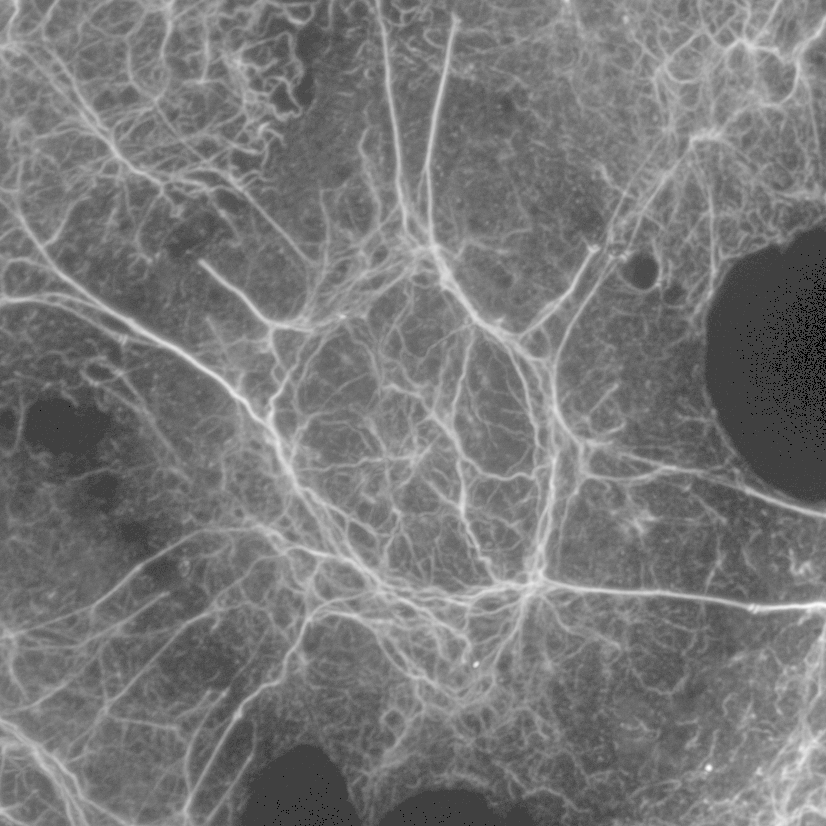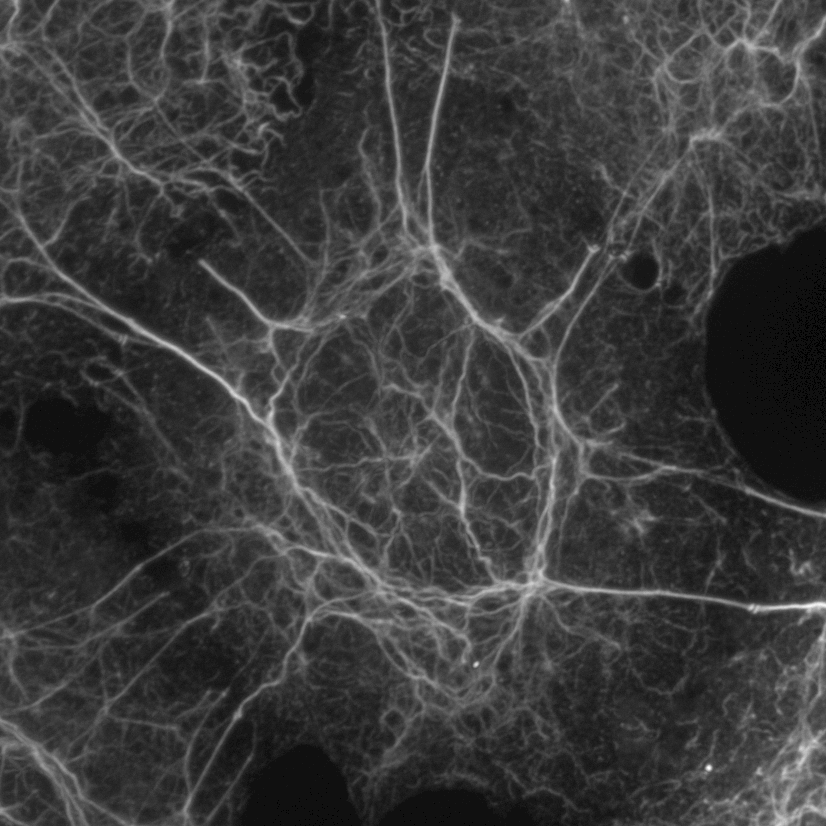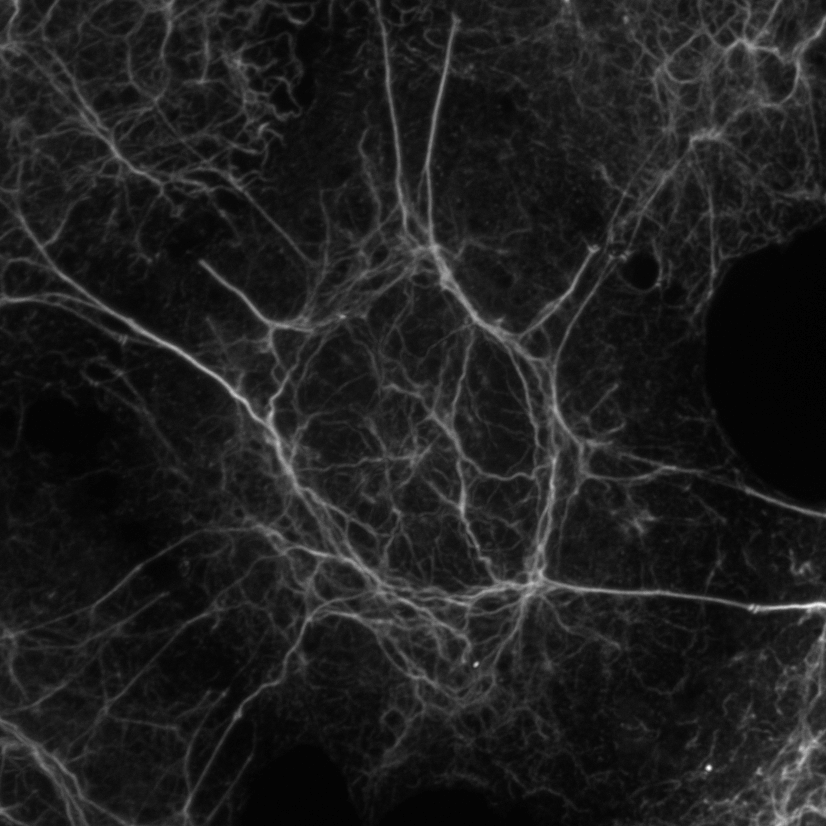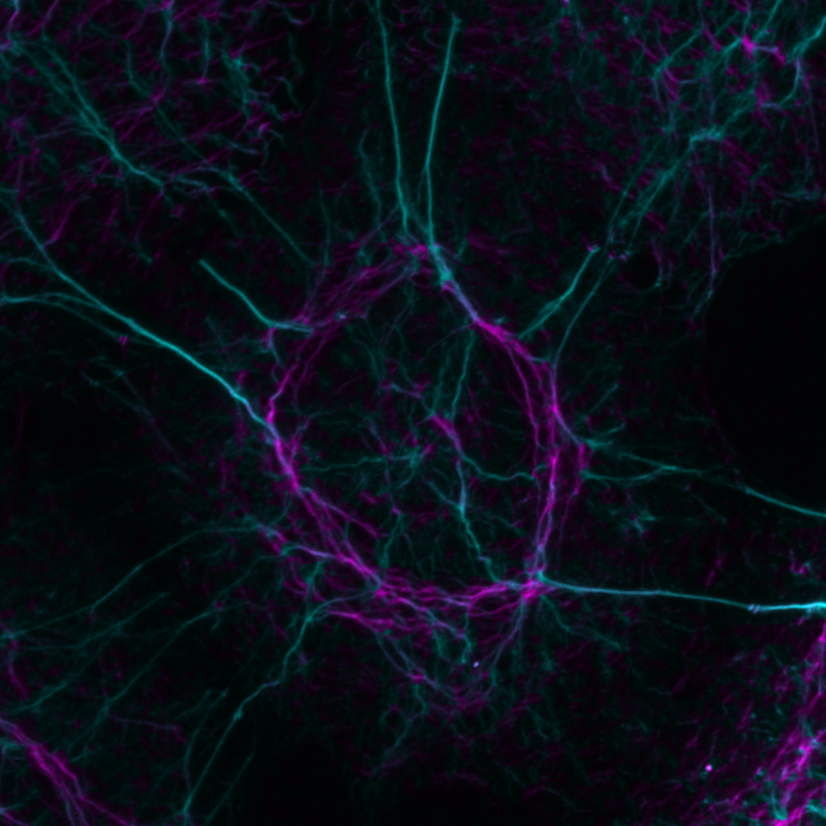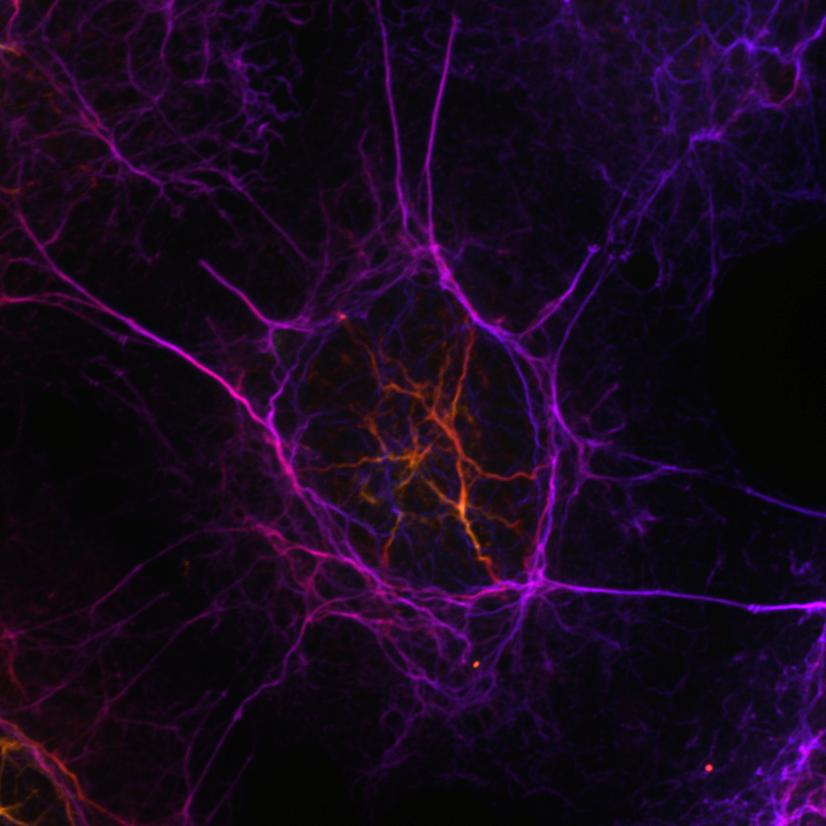Selected Visualization Options in Fiji
A curated subset of visualization options within Fiji for labmates.
Example dataset: single-channel z-stack with fluorescently tagged keratin-14
We’ll cover:
- A common “solution” for seeing fainter structures
- A better solution using gamma for seeing fainter structures
- Color-coding by orientation
- Color-coding by radiality
- Color-coding by depth
Max intensity projection (typical)
First, we’ll load a max intensity projection with brightness & contrast settings chosen such that they are pretty much at the min and max values of the image
open("C:/Users/will/Documents/2022-11-06_keratin-visualization/MAX_00-keratin-crop_MIP_130_14000.tif");
orig_name = getTitle();
setMinAndMax(130, 14000);This 16-bit image has a fair amount of dynamic range, so it’s tough to make out the fainter keratin filaments.
One common “solution” is by reducing the maximum value within the Brightness and Contrast window, but then the brighter structures appear blown out.
run("Duplicate...", " ");
setMinAndMax(130, 3100);Adjusting gamma via a look-up table (LUT)
A better solution is to use gamma1 for adjusting the LUT.
Let’s make use of LUTs2 that incorporate different gamma values.
From left to right: gamma = 0.25, 0.50, 0.75
setMinAndMax(130, 14000);
for (i = 25; i < 100;i=i+25){
run("Duplicate...", " ");
run("JDM Grays g=0." + i + " ");
}Adjusting gamma using Visualization Toolset
However, what if you want a gamma of 0.6?
Using the Visualization Toolset from @kWolbachia, you can freely adjust the gamma on the LUT itself.
By holding the ctrl key and then dragging the mouse side to side, you can easily and quickly find the optimal gamma setting.
Color coding by orientation
Using OrientationJ, images can be colored by local orientation and coherency.
Left: Original greyscale
Right: Colored in HSB mode where hue is orientation, saturation is coherency, and brightness comes from original image
selectWindow(orig_name);
run("Duplicate...", " ");
run("OrientationJ Analysis", "tensor=2.0 gradient=0 color-survey=on hsb=on hue=Orientation sat=Coherency bri=Original-Image radian=off ");
setMinAndMax(0, 100);Color coding by radiality/non-radiality
Building on OrientationJ, @katpyxa created a macro for splitting an image into radial and non-radial components.
Left: Original greyscale
Right: Radial (magenta) and non-radial (cyan) components
Color coding by depth
ImageJ/Fiji has a “Temporal-Color Code” feature which works fine if eventually you want a Z-projection.
@katpyxa has a nice plugin for doing depth color coding without Z-projections and with bonus options.
Astute readers will notice that this coverslip was slightly tilted!
Image: Example of Temporal-Color Code with the Fire LUT and increased contrast
open("C:/Users/will/Documents/2022-11-06_keratin-visualization/00-keratin-crop.tif");
run("Temporal-Color Code", "lut=Fire start=1 end=18");
setMinAndMax(0, 100);Footnotes
See here for a nice tweetorial on gamma by @loicaroyer↩︎
Thanks to JDM_LUTs and NeuroCyto_LUTs!↩︎
